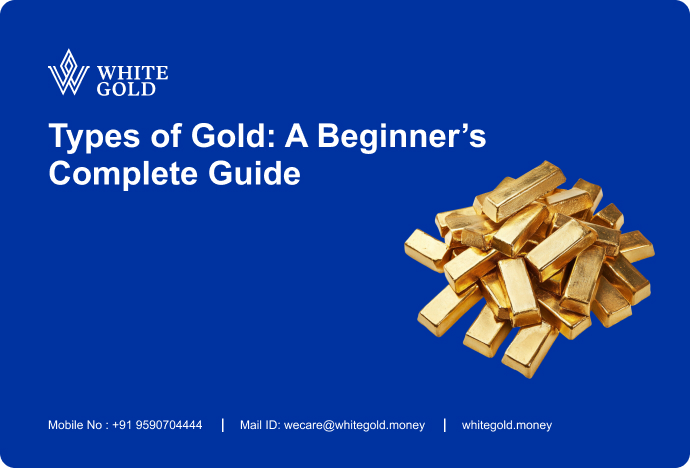Why Is Gold Still the Most Popular Investment?

5min read

In a world where financial markets are constantly evolving, and new investment opportunities seem to arise almost every day, one traditional asset remains a timeless favorite: gold. For centuries, this precious metal has held a special place in the hearts and portfolios of investors worldwide. But what is it about gold that makes it so enduringly popular, even in the digital age of cryptocurrencies and high-risk stocks? That people still invest in gold more than any other form of investment.
In this article, we’ll explore the enduring appeal of gold as an investment.
1. Stability in Uncertain Times
One of the primary reasons for gold’s popularity as an investment is its status as a safe-haven asset. During times of economic turmoil, geopolitical instability, or financial crises, gold tends to shine even brighter. The metal has a historical track record of maintaining its value when other assets falter. Its tangible nature, coupled with its limited supply, gives investors a sense of security, making it an ideal choice for wealth preservation.
For example, during the 2008 financial crisis, as stock markets plummeted and banks faced collapse, the price of gold surged. Investors rushed to buy gold as a hedge against economic uncertainty, helping them protect their wealth during a challenging period. This ability to weather storms in the financial world is a key reason why gold remains a cornerstone in many investment portfolios. Similarly, in 2021, during the COVID-19 pandemic, the gold surged to its highest rate in history.
2. Diversification and Risk Management
Gold plays a vital role in diversifying investment portfolios. Diversification involves spreading your investments across different asset classes to reduce risk. By adding gold to a portfolio that consists of stocks, bonds, and other assets, investors can reduce the overall risk associated with their investments.
This diversification effect is primarily because gold often moves independently of other asset classes. When stocks or bonds are underperforming, gold can act as a counterbalance, helping to stabilize the portfolio’s overall performance. It’s this low correlation with other financial assets that makes gold an appealing choice for risk management.
3. Inflation Hedge
Inflation, the gradual increase in the price of goods and services over time, erodes the purchasing power of money. In times of rising inflation, the value of paper currency decreases. Gold, on the other hand, has a long history of preserving its value during periods of high inflation. As the cost of living increases, the demand for gold often rises, driving up its price.
This inflation hedge is particularly important for investors looking to safeguard their wealth over the long term. Gold’s track record of maintaining its value when fiat currencies depreciate makes it an attractive choice for those concerned about the eroding effects of inflation on their savings.
4. Limited Supply and Mining Challenges
The scarcity of gold is a fundamental driver of its enduring value. Unlike fiat currencies, which can be printed endlessly by governments, the supply of gold is limited. New gold supplies are obtained through mining, a process that becomes increasingly challenging as existing gold reserves are depleted.
The difficulty in finding and extracting gold from the Earth’s crust ensures that the supply remains constrained, which supports its value. This scarcity principle is a fundamental reason why gold investment remains sought-after.
5. Global Demand
Gold is a truly global asset, with demand coming from various sources worldwide. It’s not limited to a specific country or region, and this widespread demand contributes to its enduring popularity. The metal is used for a variety of purposes, from jewellery and art to technology and, importantly, as a financial asset.
Central banks, governments, and institutional investors hold significant amounts of gold in their reserves, further emphasizing its importance. For individuals, gold is not just a symbol of wealth but also a store of value and a readily tradable asset, ensuring it continues to be in demand across the globe.
6. Cultural Significance
Gold has cultural significance in many societies around the world. It is often associated with wealth, prestige, and even religious or ceremonial purposes. This cultural attachment to gold has persisted for generations, and it plays a role in its continued popularity as an investment.
For example, in Indian culture, gold is considered a symbol of prosperity and is traditionally given at weddings and other important life events, making India one of the world’s largest gold buyers. In China, gold is often seen as a symbol of luck and prosperity. These cultural values contribute to a consistent demand for gold as both an adornment and a financial asset.
7. Tangibility and Portability
Unlike many other investments, gold is a tangible asset. Investors can physically possess gold in the form of coins, bars, or jewelry. This tangibility provides a sense of security and control that digital assets, stocks, and bonds may not offer.
Additionally, gold is highly portable, making it easy to buy, sell, and transport. This flexibility is an advantage for individuals who want to have direct control over their investments, whether for wealth preservation or emergency preparedness.
8. Versatility of Gold Investments
Investors have various options when it comes to investing in gold. They can buy physical gold in the form of bars or coins, invest in gold exchange-traded funds (ETFs), or trade gold futures and options. Gold mining stocks and mutual funds that invest in gold-related assets are also available.
The versatility of gold investment allows individuals to choose the approach that best aligns with their financial goals, risk tolerance, and investment strategies.
Conclusion
Gold’s enduring popularity as an investment can be attributed to its stability, diversification benefits, inflation hedge, limited supply, global demand, cultural significance, tangibility, and versatility. These characteristics have kept gold relevant in a constantly changing financial landscape.
While modern investment options like cryptocurrencies and tech stocks continue to gain attention, gold’s timeless appeal endures, serving as a reminder that tradition and stability often have a place alongside innovation and risk in a well-rounded investment portfolio. Whether for wealth preservation, diversification, or a hedge against economic uncertainty, people invest in gold to secure their financial future.







